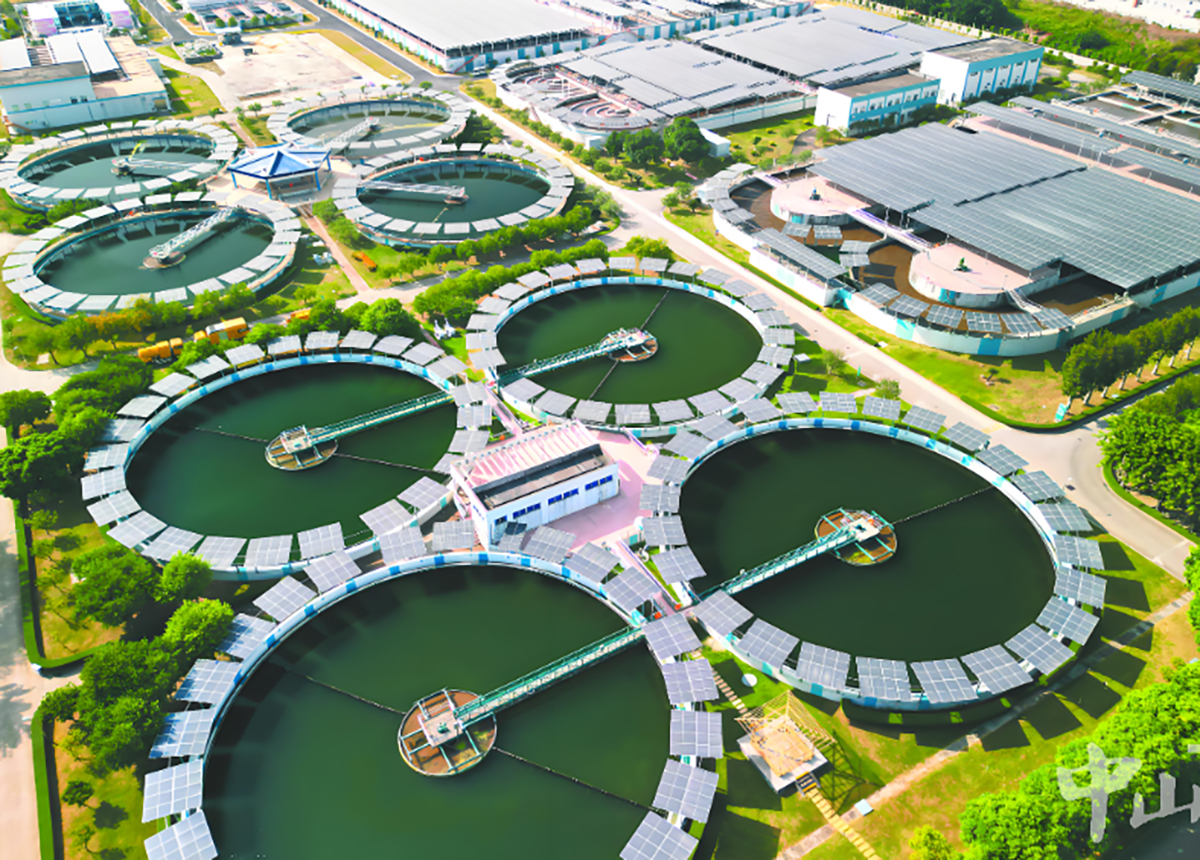Open channel ultraviolet disinfection system: the "national standard protector" for municipal sewage discharge compliance
In the field of municipal sewage treatment, strict discharge standards are the bottom line for safeguarding the ecological environment and public health. With the Class A standard (GB 18918-2002) in the "Pollutant Discharge Standards for Urban Sewage Treatment Plants" becoming the core indicator for municipal sewage discharge, the Huashiwei open channel ultraviolet disinfection system, with its excellent technical advantages, has become a key force in ensuring stable and compliant sewage and promoting green development.
Efficient sterilization, precise targeting of Class A microbial indicators
The Class A emission standard imposes strict requirements on microbial indicators such as the number of Escherichia coli (≤ 1000 Escherichia coli/L). The open channel ultraviolet disinfection system uses 254nm wavelength ultraviolet light to penetrate the cell membranes of bacteria, viruses, parasite eggs and other microorganisms in a very short time, destroying their DNA or RNA structures, and achieving a sterilization efficiency of over 99%. Through actual testing and verification, the system can stably control the number of fecal coliforms in municipal sewage within the first level A standard limit, ensuring that the microbiological safety of the effluent fully meets the national standard requirements and eliminating the risk of water borne diseases from the source.
No chemical residues, avoiding the risk of secondary pollution
Although traditional chemical disinfection (such as chlorine disinfection) can kill microorganisms, it is prone to producing harmful by-products such as trihalomethanes and residual chlorine, which makes it difficult for effluent chemical oxygen demand (COD), total chlorine and other indicators to meet Class A standards. As a pure physical technology, open channel ultraviolet disinfection does not add any chemical agents throughout the process, does not change the pH value, heavy metal content, and chemical composition of the sewage, and has no risk of secondary pollution, providing reliable guarantee for the stable compliance of municipal sewage. Whether it is organic matter indicators, heavy metal residues, or disinfection by-products, the effluent after ultraviolet disinfection can meet the strict requirements of Class A standards for water purity.
Intelligent adaptation, flexible response to different working conditions requirements
The frequent fluctuations in inflow and water quality of municipal sewage treatment plants pose challenges to the adaptability of disinfection systems. The open channel ultraviolet disinfection system adopts a modular design, which can flexibly adjust the number and layout of lamps according to the actual processing scale (from tens of thousands of tons to hundreds of thousands of tons). Combined with an intelligent control system, it can monitor water flow velocity, ultraviolet intensity and other parameters in real time, automatically adjust the operating power, and ensure stable compliance with Class A emission standards under different working conditions. Its strong adaptability to changes in sewage turbidity, water temperature, etc. effectively avoids disinfection failure caused by water quality fluctuations.
Economic and environmental protection, reducing the comprehensive cost of compliance
Achieving Class A emission standards requires a balance between effectiveness and cost. The Huashiwei open channel ultraviolet disinfection system stands out with its significant economic benefits.. The equipment only consumes electrical energy during operation, and does not need to bear the cost of purchasing, storing, transporting, and processing chemical agents. It is also easy to maintain (mainly by regularly replacing the lamp tube), and the operating cost throughout the entire life cycle is reduced by more than 30% compared to chemical disinfection methods. At the same time, its non secondary pollution characteristics reduce the subsequent steps and investment in deep water quality treatment, helping sewage treatment plants to meet national standards at a lower economic cost and promoting the sustainable development of municipal sewage treatment. From precise control of microbial indicators to stable compliance of all water quality standards, the open channel ultraviolet disinfection system, with its efficient, environmentally friendly, and intelligent technological advantages, has become a "standard configuration" for municipal sewage to meet Class A discharge standards. It is not only a solid barrier to protect the urban water environment, but also a core force to practice the concept of green development and promote the innovation of sewage treatment technology, injecting technological momentum into the construction of eco-friendly cities.


Open channel ultraviolet disinfection system: the "national standard protector" for municipal sewage discharge compliance
In the field of municipal sewage treatment, strict discharge standards are the bottom line for safeguarding the ecological environment and public health. With the Class A standard (GB 18918-2002) in the "Pollutant Discharge Standards for Urban Sewage Treatment Plants" becoming the core indicator for municipal sewage discharge, the Huashiwei open channel ultraviolet disinfection system, with its excellent technical advantages, has become a key force in ensuring stable and compliant sewage and promoting green development.
Efficient sterilization, precise targeting of Class A microbial indicators
The Class A emission standard imposes strict requirements on microbial indicators such as the number of Escherichia coli (≤ 1000 Escherichia coli/L). The open channel ultraviolet disinfection system uses 254nm wavelength ultraviolet light to penetrate the cell membranes of bacteria, viruses, parasite eggs and other microorganisms in a very short time, destroying their DNA or RNA structures, and achieving a sterilization efficiency of over 99%. Through actual testing and verification, the system can stably control the number of fecal coliforms in municipal sewage within the first level A standard limit, ensuring that the microbiological safety of the effluent fully meets the national standard requirements and eliminating the risk of water borne diseases from the source.
No chemical residues, avoiding the risk of secondary pollution
Although traditional chemical disinfection (such as chlorine disinfection) can kill microorganisms, it is prone to producing harmful by-products such as trihalomethanes and residual chlorine, which makes it difficult for effluent chemical oxygen demand (COD), total chlorine and other indicators to meet Class A standards. As a pure physical technology, open channel ultraviolet disinfection does not add any chemical agents throughout the process, does not change the pH value, heavy metal content, and chemical composition of the sewage, and has no risk of secondary pollution, providing reliable guarantee for the stable compliance of municipal sewage. Whether it is organic matter indicators, heavy metal residues, or disinfection by-products, the effluent after ultraviolet disinfection can meet the strict requirements of Class A standards for water purity.
Intelligent adaptation, flexible response to different working conditions requirements
The frequent fluctuations in inflow and water quality of municipal sewage treatment plants pose challenges to the adaptability of disinfection systems. The open channel ultraviolet disinfection system adopts a modular design, which can flexibly adjust the number and layout of lamps according to the actual processing scale (from tens of thousands of tons to hundreds of thousands of tons). Combined with an intelligent control system, it can monitor water flow velocity, ultraviolet intensity and other parameters in real time, automatically adjust the operating power, and ensure stable compliance with Class A emission standards under different working conditions. Its strong adaptability to changes in sewage turbidity, water temperature, etc. effectively avoids disinfection failure caused by water quality fluctuations.
Economic and environmental protection, reducing the comprehensive cost of compliance
Achieving Class A emission standards requires a balance between effectiveness and cost. The Huashiwei open channel ultraviolet disinfection system stands out with its significant economic benefits.. The equipment only consumes electrical energy during operation, and does not need to bear the cost of purchasing, storing, transporting, and processing chemical agents. It is also easy to maintain (mainly by regularly replacing the lamp tube), and the operating cost throughout the entire life cycle is reduced by more than 30% compared to chemical disinfection methods. At the same time, its non secondary pollution characteristics reduce the subsequent steps and investment in deep water quality treatment, helping sewage treatment plants to meet national standards at a lower economic cost and promoting the sustainable development of municipal sewage treatment. From precise control of microbial indicators to stable compliance of all water quality standards, the open channel ultraviolet disinfection system, with its efficient, environmentally friendly, and intelligent technological advantages, has become a "standard configuration" for municipal sewage to meet Class A discharge standards. It is not only a solid barrier to protect the urban water environment, but also a core force to practice the concept of green development and promote the innovation of sewage treatment technology, injecting technological momentum into the construction of eco-friendly cities.












